Hot and Noisy: The Best Tips on How to Eat in China
Here’s a quick guide on how to find great places to eat in China.
These are the rules that the locals use to find great places to eat — including Mainland China, Hong Kong, and Taiwan.
When travelling in Greater China — or even some other parts of Asia — you might find it difficult to choose the best places to eat.
Some questions people often have are:
- How do you know where to eat when there are ten eateries on the street where you’re staying?
- What do you order when the whole menu is in Chinese?
- Do you get dessert if you’re in China? (Is that… beans?)
These are just a few questions that you’ll find yourself asking when eating out in Greater China, a place we spent many years living and exploring — something we’ll continue to do.

It’s hard for foreigners to know where and what to eat in China (and the rest of Asia). It goes far beyond learning to use chopsticks.
Understanding where to eat, what foods to eat and how to eat — particularly in simpler, almost street-food like establishments — means changing how you see the world.
But relax! Eating out in China can be massively simplified with a few simple rules.
On the whole, you need to get out of your comfort zone a little to experience the world through the eyes of a local. The many rituals of Chinese food have interesting cultural sub-contexts.
For example, the Cantonese people in the south of China have a tradition of using special serving chopsticks (“共用筷子”) for serving food. This has its origins in the ease of disease spreading in crowded cities.
And the bustling nature of night markets in Taiwan comes from the fact that they’re social places where people hang out at night, rather than at bars or clubs like outside China.
So learn a bit about how to eat in Greater China and you’ll end up learning a lot about local culture.
Here are the major rules. Read below for more details.
You might also like our in-depth guide to what it means to “be” Chinese or to “speak” Chinese.
Become a Discoverer
Like this guide to Chinese culture? Join our mailing list, and get weekly deep but fun-to-read insights into culture, languages, and travel.
Contents
How to Eat in China — A Summary
Here are the rules in a nutshell. Memorise these, they’ll save you pain, and help you find joy!
- Eat anywhere that’s “hot and noisy”. This means anywhere that’s bustling and full and where many people are eating (preferably all eating the same thing).
- Look for a production line making food in high volume. This could be a few people producing dumplings, or a rice dish, or anything. A high-efficiency system is designed to serve many people the same thing!
- Order the speciality dish. It’s often the name of the place, like “Mr Bing’s Special Noodles”. Or you can ask the owner what’s good to eat.
- Meat means pork. Pork is everywhere (and delicious). If you don’t eat meat, you have to say you want to eat vegetarian.
- Don’t eat anything weird that’s got a hard sell. Just like most parts of the world, it’s likely over-priced and not the best pick.
- Vegetables are low priority, so don’t get them when eating out (other than hot pot or big mixed bowls).
- Dessert isn’t done very well in Chinese culture — don’t expect much other than fruit or maybe custard tarts.
Other than that, have fun and explore. Much more detail (and delicious photos of Chinese food) below!
In China, eat anywhere that’s “hot and noisy” (bustling).

Rule number one is to look for lines, crowds, noise and heat. That’s where the good stuff is.
In Chinese, people will affectionately refer to a bustling place as being “熱鬧” (re nao in Mandarin, yit naau in Cantonese), which literally translates to “hot and noisy”.
If a place is hot and noisy, it is bustling — full of people who are all viscerally enjoying their food. There may be a line at the counter for people waiting for take-out, or a crowd gathered watching people make something.
In a busy establishment, the person taking orders is probably yelling orders to cooks out back. Everyone is eating the same dish (or two).
It’s literally noisy, with people talking and eating loudly. It’s not literally hot, luckily — these days, air conditioning is pretty common all over South East Asia, where it’s most needed because of the tropical weather.
A place that’s re nao is the equivalent of a place in the US or Australia that has a 4-plus-star Yelp or Google rating from over 1,000 reviewers, and which has a 45-minute wait for a table or where it’s flatly impossible to walk in.
The difference between a bustling place, in any Asian country, is that there’s no wait for a table — people will generally eat their food and leave, not luxuriate over it. In most restaurants in most cities, you’ll be able to sit down right away and get your food pretty quickly.
On that note, you’ll find it awkward to linger in restaurants anywhere in China. For one thing, table service is a rarity unless you’re spending top dollar, so you’ll have to keep getting up if you want to keep ordering anyway.
It might be challenging to find crowds if you go in off-hours. In those cases, look for signs that they usually deal with a crowd, like ropes that mean they usually have to coerce people to form an orderly queue. This, hand in hand with some solid advice from friends or the internet, is good enough.
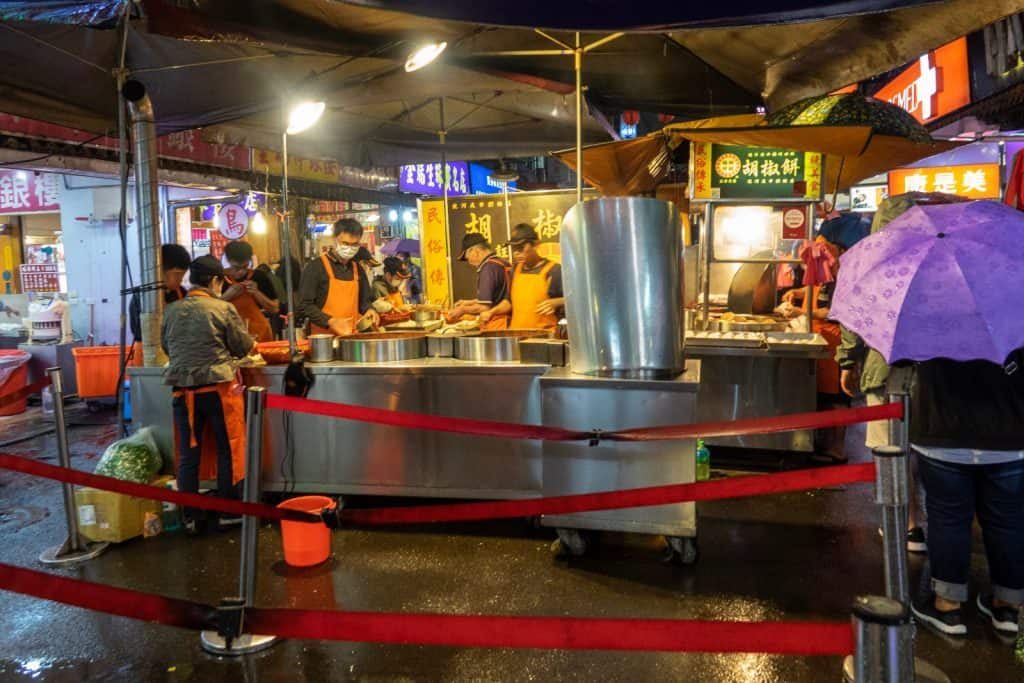
What to avoid: People selling too hard or trying to get fancy. A few hints:
Avoid any place with anyone out front beckoning people into the restaurant, trying to get your attention with “hey, hello!” (even worse: if they’re yelling in English!)
If someone offers you a beer in Greater China, just keep walking. Standard tourist trap. Look at how many others are drinking beer. Yes, people drink, but it’s not a standard part of a meal in most of China unless it’s to celebrate something (in which case people will toast with rice wine).
In touristy areas, it’s known that people from other countries like beer with their meals, and they’ll offer it. (Of course, if that’s exactly what you’re looking for, you’re in luck.)
Avoid linen tablecloths. That place is going to be expensive, and unlike in non-Asian countries, probably no better than a collection of street food stalls.
Overall in a fancy establishment the food might be better and more consistent, like everything at Lung King Heen in Hong Kong’s Four Seasons is 9/10, so at least the entire menu is a good bet.
Look for a production line cranking out food.
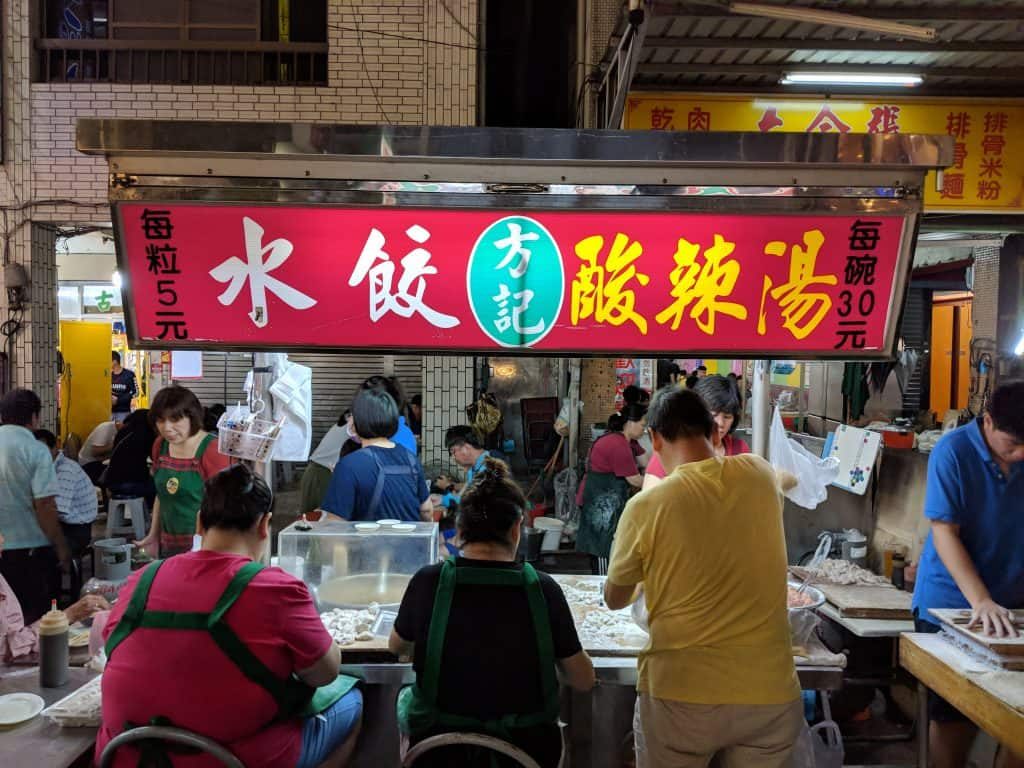
Rule number two is to eat in places where there’s a production line cranking out the goods. They’re so run off their feet that they have to keep working to meet demand. This is where you want to eat.
Whenever we see a line of people producing food like a factory assembly line, we become entranced. Crowds will gather to watch as a group of up to five people assemble whatever is being made: dumplings, steamed buns, mini hamburger-equivalents or a variety of other things.
The louder the production of food, the better — you want to see clanging of metal against metal as food is cast swiftly and precisely from one station to the next.
Sometimes the production line is just one person taking food loudly from a hot plate to a grill to a serving dish, but the effect remains if a few dishes are being prepared at the same time.
The production line signals a few things, all of which are positive:
High demand for the product. “Look at how many people we need just to feed you all! That guy ONLY makes stuffing, and this woman ONLY makes the dumpling pastries, and we need two other people, too.”
Freshness. A freshly rolled dumpling pastry is very tender, several levels of quality apart from the typical trashy fare that a small local will throw at you in the West, where dumplings are rescued from the ignominy of a frozen plastic container in which they’ve been stored for who-knows-how-many months.
A freshly manufactured cream puff will have you marvelling at how crisp pastry can blend into a tender filling and make you unable to accept anything but freshness in the future. You won’t look back.
Mastery. The production line tells you that this place has mastered the thing they’re making. The woman pinching together the dumpling cases for you? She does that 1,000 times a day, if not more. She’s good at it.
That dumpling is going to hold together in the water, on your plate and right up until it goes into your mouth, and there won’t be any excess pastry.
Obviously, you’re going to order whatever the production line is churning out.
What to avoid: Avoid a person sitting in front of food that has been prepared sometime earlier. For example, if you order fried chicken, and they don’t take a par-cooked cutlet and re-fry it in front of you to make it hot and crispy, then it’s going to be a waste of time, money and food budget.
Don’t worry — normally, nobody else will be ordering from them either. The lack of hot-and-noisy-ness will be all the signal you need.
Yes, it can tug at your heartstrings to see a quiet stallholder playing games on their phone as they serve absolutely nobody. Sometimes I think maybe this one’s a hidden gem that everyone is passing over, and I’ll be the one to discover it. Not a chance.
Perhaps if I had been in China for ten years I’d be at the level where I could discover new amazing food places, but unfortunately, I’m far from it. I’ve tried this before and it has been a waste every time. Be adventurous, but be warned.
Order the speciality dish.
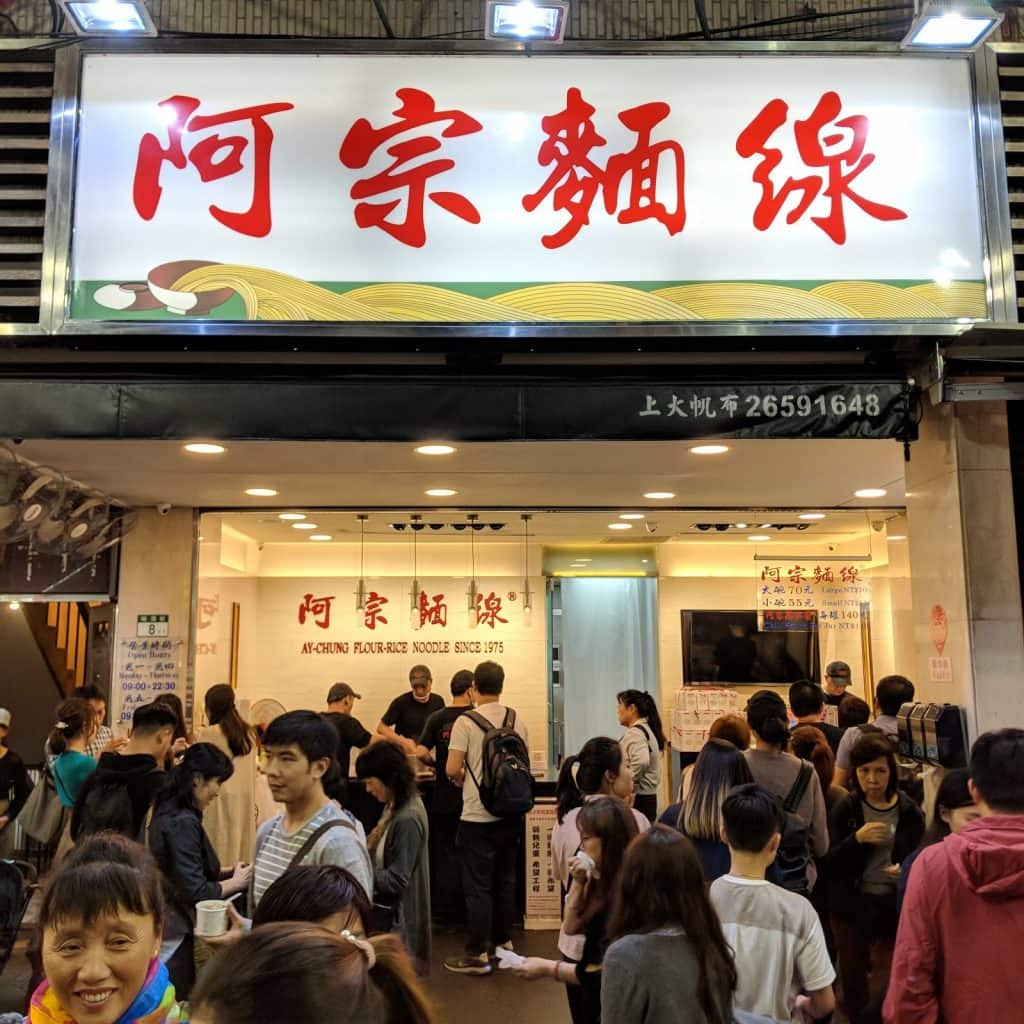
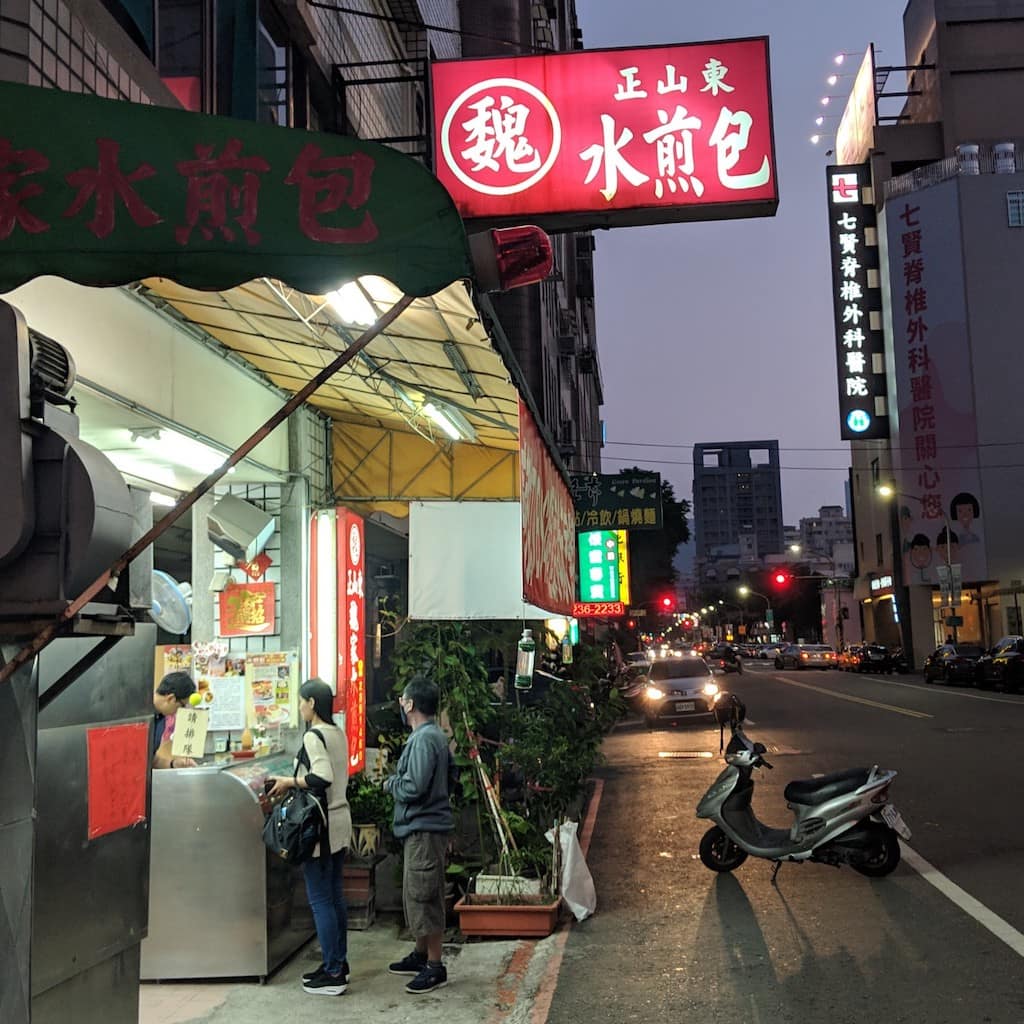
Rule number three is to order each restaurant’s speciality item. Every restaurant has one speciality. You want to order that. If it’s a dumpling shop that also has noodles, you should order the dumplings. (You can order the noodles as a side dish too, sure.)
This goes beyond night market stands that only sell one thing. Restaurants that have thirty things on the menu will have one or two things that they’re really well-known for and that the chef is proud to make. (Of course in high-end restaurants most things are good, but we’re not talking about those here.)
Are you really going to go to “Fat Boss’ Lamb Stew” and tell the Fat Boss you want something other than the Lamb Stew?
You’ve probably all seen a typical Chinese menu. Let me refresh your memory. Here’s a fairly ordinary one I took outside a restaurant recently:
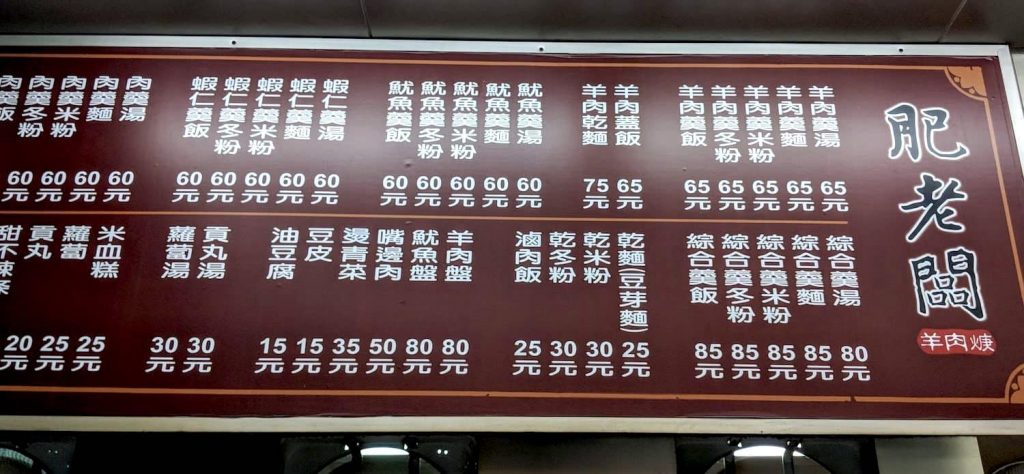
There’s so much choice! Yes, it’s a wall of strange characters, but once you learn the major characters for things like soup, rice, dumplings and noodles, you’ll see that there are so many choices in each type of food.
The thing is, most foods on the Chinese menu are noise, trying to distract you from the prize. How do you know? The name of the place. Obviously, from this place, you order lamb stew. It’s called “Fat Boss’s Lamb Stew” (the characters 肥老闆羊肉焿 on the right). Are you really going to go to “Fat Boss’ Lamb Stew” and tell the Fat Boss himself you want something other than the Lamb Stew? Hell no!
As the Chinese say: 鱼龙混杂, “Fish and dragons are mixed together”. I.e. with good comes bad. Fish and dragons actually could be a pretty interesting dish…
Relax, you don’t need to learn to read Chinese to understand this.
In case it’s not painfully obvious what the speciality of the place is (like, they only make one thing), there is of other tactics that you, the intrepid culinary adventurer, can employ.
Firstly, look around at what people are eating. Have a stroll up and down the tables in the busy restaurant. If you see everyone with a bowl of noodles in front of them: bam, you’re getting noodles. It’s fine to look at what they’re eating. They’re already staring at you, and will soon be staring at what you’re eating (especially if it’s the wrong thing. Don’t get the spaghetti bolognaise.)
Secondly, ask the boss him- or herself. There’s a phrase worth learning: What’s good to eat here?
- Mandarin: 這裡有什麼好吃的?(zhe li you shenme hao chi de?)
- Cantonese: 呢道有乜嘢好吃? (li dou yao mat ye hou sek?)
OK, you’ll need a bit of help with the pronunciation from a local. But those phrases will get you very far. Even if you don’t get the answer in a language you understand, you will at least get an indication and you can ask for that, arms flailing as you attempt to coerce the owner into giving you nothing but the most delicious item.
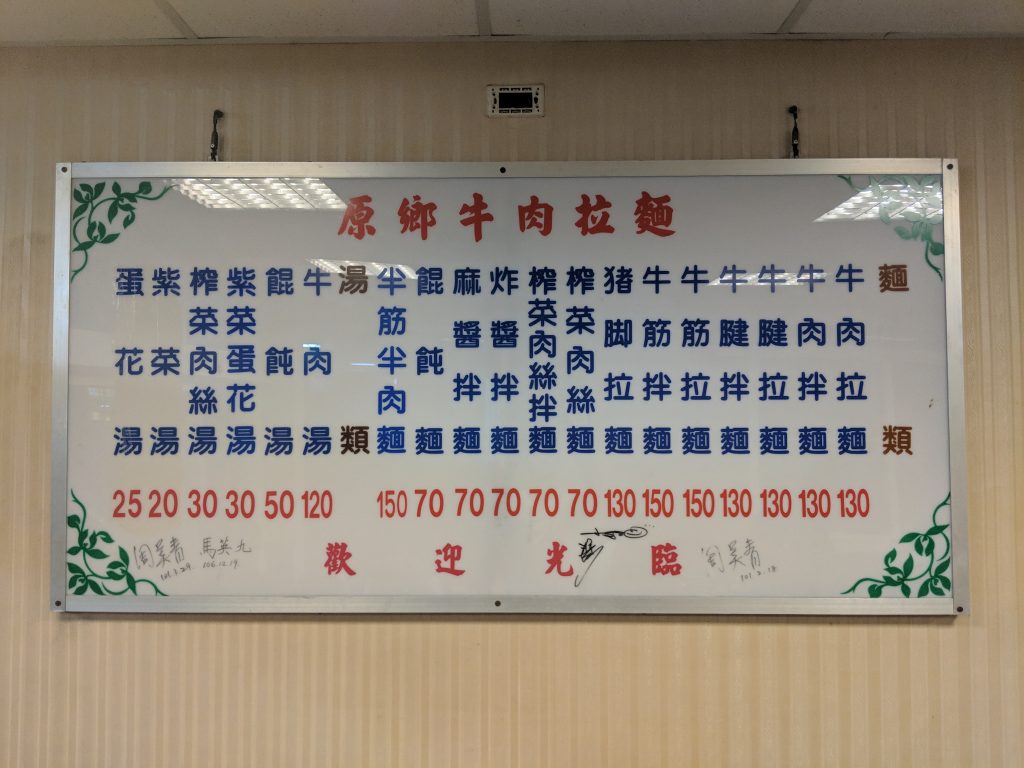
I’ve often been surprised by how easy it is to ask what’s good to eat. It’s very different from asking a waiter in a fancy Western restaurant what’s good. In those cases, I find that in many they can tell you what’s most popular, which is not a bad start. I often distrust them, thinking they’re trying to sell whatever is left over, undersold or overpriced.
But ask the boss at a small Chinese eatery what’s good to eat and he or she will unabashedly say: the dumplings. Or the salty chicken. Or whatever. Something they’re proud of. There you go, order that.
What to avoid: If they’re selling it too hard, don’t buy it. This happens in dim sum restaurants, I find.
You go to a dim sum place for the basics (char siu bao, ha gao, etc.) and then people come around offering things like baked oysters, lobsters with cheese, crab legs, salty squid etc.
Sure, some of the expensive stuff might be good, but a) it’s not going to be as amazing as a well-executed cha siu bao, b) it’s going to be expensive and c) if they have to sell it, you shouldn’t buy it. Anyway, lobster and cheese sounds gross. Serves you right.
Meat means pork, so be clear.
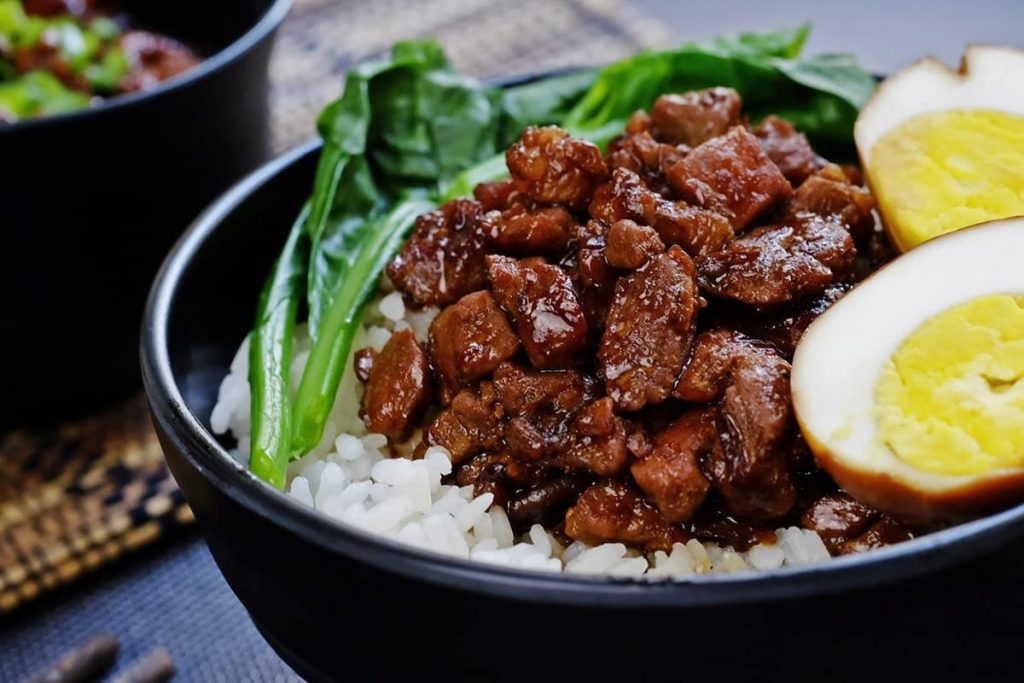
Rule number four: Understand that pork is the king of meats, and meat is everywhere. The Chinese character for ‘meat’ (肉) actually means “pork” unless otherwise specified.
Pork comes in many forms, all of them amazing. Pork chops, pork belly (which, I only recently learned, is basically bacon but uncut!), braised pork, stir-fried, pork floss (a whole other thing).
You have to be careful if you don’t eat meat. If you simply say you don’t eat meat, then people may still think you eat any of the following:
- Beef
- Fish
- Shrimp
- Other seafood
Shrimp deserves its own special mention. As a powder or spice, it’s often classified as a flavouring in most parts of Asia. If it’s extremely important for you not to eat shrimp or pork, it will be difficult to eat in most parts of China-influenced Asia. This makes it tough for anyone who wants to keep kosher.
For anyone in search of good vegetarian cuisine, the safest bet is Buddhist-style eateries that serve a wide variety of vegetable dishes, along with a lot of “fake meat” made of wheat gluten.
Personally, I’m not a fan of wheat gluten (it has the consistency of coagulated glue and the flavour of whatever they dumped onto it), but if you’re after a reliable vegetarian meal, this would be my first port of call. Unless you want to just go eat western food.
A word on pork: don’t be afraid of it. Religious reasons aside, many people have a cultural hang-up about pork, believing that pigs are fundamentally dirty and that the meat cannot be trusted.
Things have changed a lot in the last 50 years of agriculture, and while we have a long way to go in animal treatment, you can trust the quality of a lot of pork far more than you used to be able to do.
In the west, I would eat a pork steak medium rare and be fine with it. I’d be a little selective in a place where I don’t know how meat has been stored, but it’s entirely possible.
What to avoid: Any place vegetarian unless you’re vegetarian. Not worth it.
Don’t eat anything “weird” that’s shoved in your face.

Rule number five is if someone is trying to sell you something weird, don’t eat it. You’re just making some obscure insect farmer richer.
I don’t mean don’t be adventurous. Do be adventurous, but aspire to do as the locals do. There’s lots of local, regular “weirdness” in China, like chicken feet (I say don’t bother; they can’t come close to a deliciously juicy chicken thigh, and are way fattier), or “mu er” (木耳) mushrooms, a cold appetizer which is deliciously fresh and crunchy and which I highly recommend, despite being a little slimy.
Just look around at the stuff on people’s plates and order it.
But even if you don’t — tripe isn’t everyone’s cup of tea, for example — that’s fine. There’s no medal for arbitrary culinary bravery. Even just being somewhere that serves tripe, chicken feet and obscure vegetables is a culturally enriching experience. If someone else orders it, gawk. Maybe try it.
For many first-timers in China, and in many parts of Asia, there’s a tendency to think that Chinese food is ‘weird’. They’ve heard some unsettling stories about chicken feet, heard some rumours about dog meat and then see pigs blood on the menu at the first establishment they go to (forgetting that it is a staple of French cuisine, too).
Firstly, one thing needs to be made very clear: Our media and culture tend to totally over-hype the weirdest stuff, to emphasize differences between us and polarize people intentionally.
When you spend time in China, you’ll learn that everyone there is on many levels exactly the same as everyone else in the world. They want a stable family with space in their home, a dog and healthy, educated children.
So if you hear that Chinese people eat dogs: look for the evidence. You’ll see that there are many dog owners in modern China who are horrified by dog meat. Dog meat restaurants are all but extinct and are frequently shamed in social media.
Secondly, every culture has its weird things that the locals think is totally normal. Australians have Vegemite, which objectively is gross (although I still think it’s because foreigners don’t know how to eat it).
Similarly with haggis in Scotland: yeah, you’ll find it at a touristy breakfast joint but it’s not like everyone has it every day, just as Americans don’t have pizza and hot dogs for lunch every day and the French don’t routinely dine on a cuisine of boudin (blood sausage).
Every weird food is a sometimes food, and increasingly rarely seen as people around our slowly globalizing world tend to converge on what’s gross.
Thirdly, and this is the part that confounds the confusion, locals know that weird food is good business. I don’t think I’ve seen crocodile burgers in Australia outside heavily-trafficked tourist areas. Definitely not at the supermarket.
But those clever business owners out in the remote areas know how to sell to tourists, and so put up big signs saying “Croc burgers” as if it’s normal everyday Aussie fare. It doesn’t mean anyone else in Australia eats that way!
In the same way, if you go to Wangfujing avenue in Beijing, local vendors will be selling all kinds of insects on sticks. In six years in Greater China, I’ve never seen insects on sticks in any other place other than Wangfujing. If you eat them there, you’re just making some guy laugh at how his insect farm is going so ridiculously well.
What to avoid: Weird foods that people are trying too hard to sell you, like insects. But also, avoid being unadventurous. Donkey burgers (驢肉漢堡) are pretty good.
Vegetables are a low priority, so get them elsewhere.

Rule number six: Get your vegetables somewhere else. Vegetables are definitely a low priority in most low-end Asian eateries.
If you are after a place that has well-balanced meals, you will find it very difficult, to the point where I’d suggest you abandon the idea and just get some vegetables or salad separately from somewhere else.
It IS possible to eat healthy, e.g. by choosing hot pot with clear soup and lots of vegetables. I do prioritise eating healthy, so I wrote a guide on eating healthy in Taiwan, for example (it applies to other parts of Asia).
For example, a typical Chinese banquet (like what you’d get at an official function or a wedding) will consist of many dishes, including one of each of the following:
- Cold meat appetizers
- Fish (deep-fried or poached)
- Pork (sweet, stir-fried)
- Beef (strips, stir-fried)
- Chicken (something like boiled)
- Duck (usually roast)
- Some vegetable (maybe Chinese broccoli)
- Seafood e.g. shrimp
- Soup (something thick, typically seafood)
- Rice (towards the end)
- Noodles (at the end)
- Dessert (candied yams or bananas, or red bean soup)
Note how the vegetable is casually thrown in there. If someone is ordering, they’ll usually add one in, sometimes a bit bashfully, for a sense of completion. I mean in the same way they’ll feel the need to order one of every kind of protein.
Note I didn’t even include the more expensive proteins, like lobster or abalone, which — if the budget permitted — would be additive to the menu, not replacing any other items.
In summary, get your dumplings, noodles or beef rice wherever you happen to be, and get some vegetables somewhere else. Maybe keep some sauerkraut in your hotel room…
Dessert will not be served.

Rule number seven is that don’t order dessert, because there isn’t any — not at this restaurant, anyway. Chinese dessert is very different. Compared to the rest of the world, China isn’t very good at desserts. There, I said it!
Look, I really like Chinese desserts. Things like red bean soup, tofu pudding, candied yams or bananas, custard tarts (thank you, Portuguese influence) and shaved ice with mango (more a Taiwan/southern thing).
Chinese desserts are great — they’re mildly sweet and even have some healthy properties (look, better candied yam than a doughnut!).
But as good as Chinese desserts can be, they’re a far cry from some of the best desserts I’ve ever had in the world. Like the Chocolate Souffle Cake from Tartine, in San Francisco (a cake so unabashedly amazing I declared, after eating it, that I was done with cake for the rest of the year), or the array of ice creams available all over Italy, the pastries of France, the pies of the US… I could go on, but I shouldn’t.
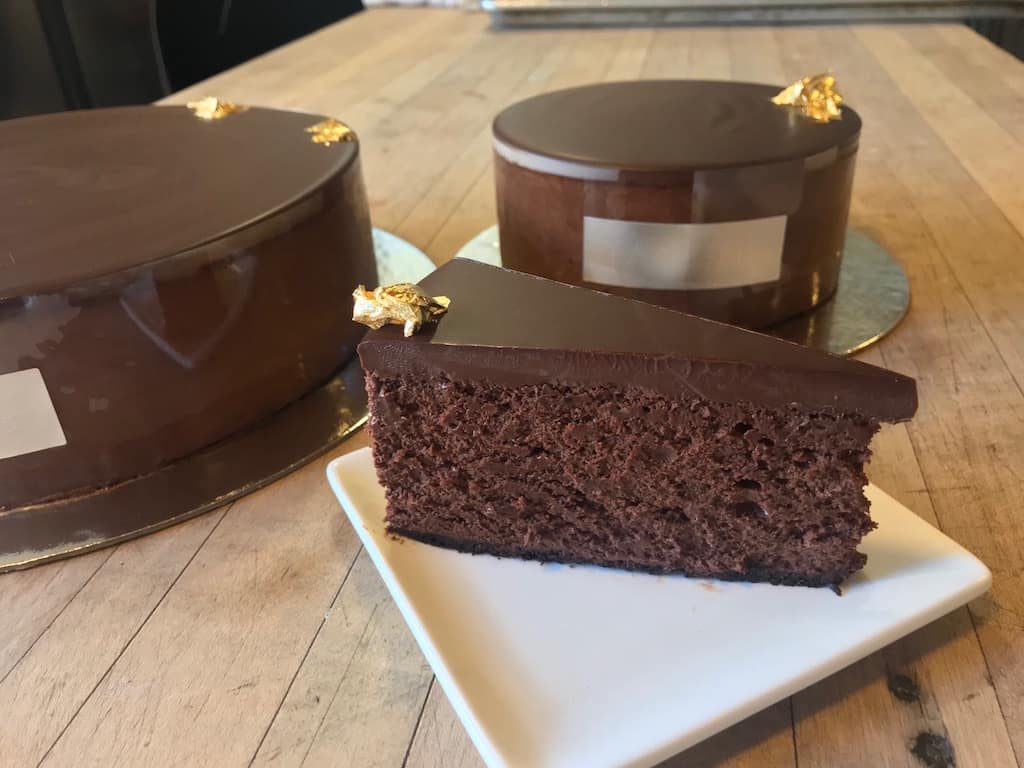
In your average Chinese street restaurant, there is no dessert beyond the sliced orange or watermelon they serve at the end with the cheque. I almost guarantee it. You might see a sign saying “free ice cream”, but believe me, you probably don’t want that ice cream.
So you bail, and go nearby to a dessert shop, and depending on the region of China you’re in, you might have an option like
- Very light cakes at a bakery (typically not open late at night)
- Custard tarts (蛋塔)
- Tofu pudding (豆腐花)
- Red bean soup (possibly with other things in it) (紅豆湯)
There are many other things you might find regionally. All these are fine, and must be tried (as I said, I love them!), but be aware that they won’t excite your tastebuds with sugar in the same way that a typical non-Chinese dessert would.




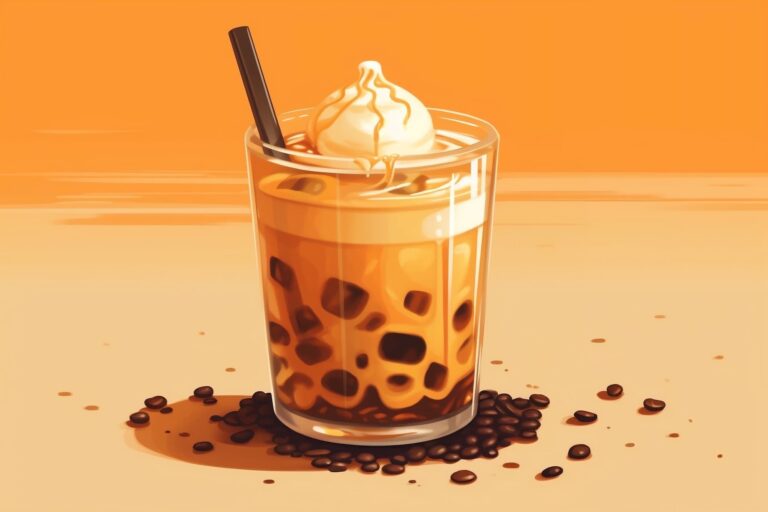




Nice post ! I found your points realistic. In China, people usually enjoy food at hot and noisy places. The other thing I found relatable is ordering the restaurant’s special dish. This is what I do most of the time.Thanks for sharing such a great article.
Thank you Eleana. Love your website too!